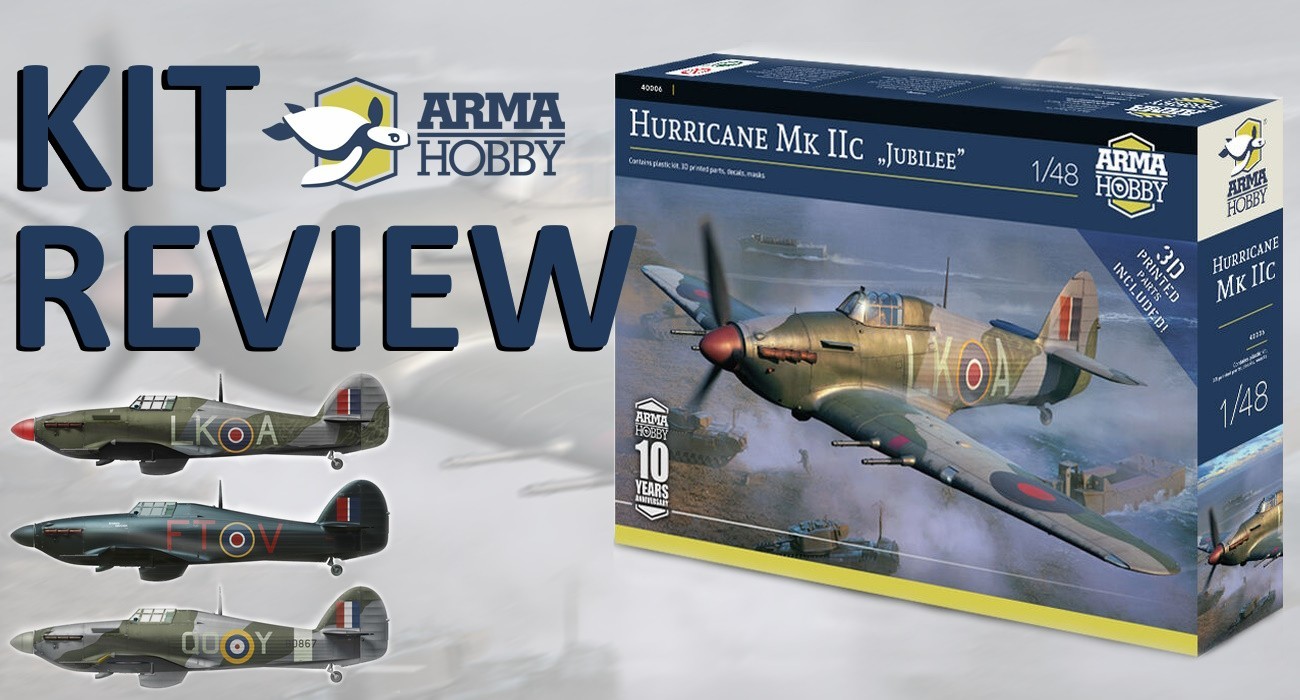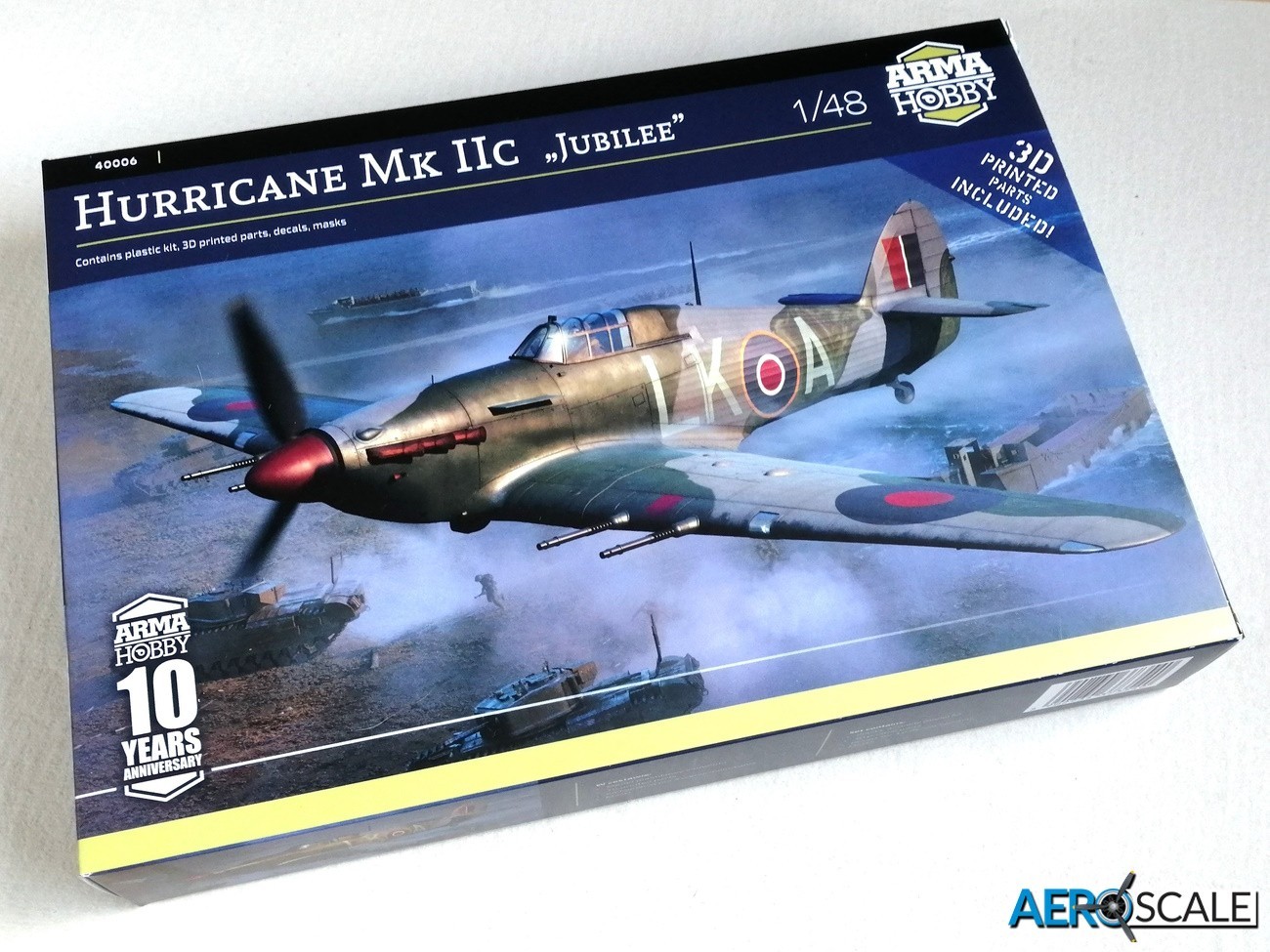
Background
The Hurricane Mk.IIc powered by the Merlin XX engine with two-speed supercharger. was fitted with four wing mounted Hispano Mk.II cannons. The wings were modified so that either 250lb or 500lb bombs could be carried. Later the hardpoints were plumbed so that two fuel tanks could be fitted to extend the range. The introduction of the Mk.IIc came at a time when the gap in performance between the Hurricane and the principal Luftwaffe fighters was increasing. The Hurricane had a similar problem with performance against Italian fighter over North Africa. So the Mk.IIc found a new role as a dedicated ground attack aircraft, adopting the name ‘Hurribomber’. It was also employed as a night fighter as well as an intruder fighter. Twelve Hurricane Mk.IIc [NF] night fighters were equipped with pilot-operated air interception Mark VI radar.
Hawker built 1,417 Hurricane Mk.IIc’s from 1941 to the middle of 1943. Around 1,182 Mk.IIc’s were sent over to Russia. The canon armament made it more popular than the earlier Hurricanes armed with ineffectual Browning machine guns.
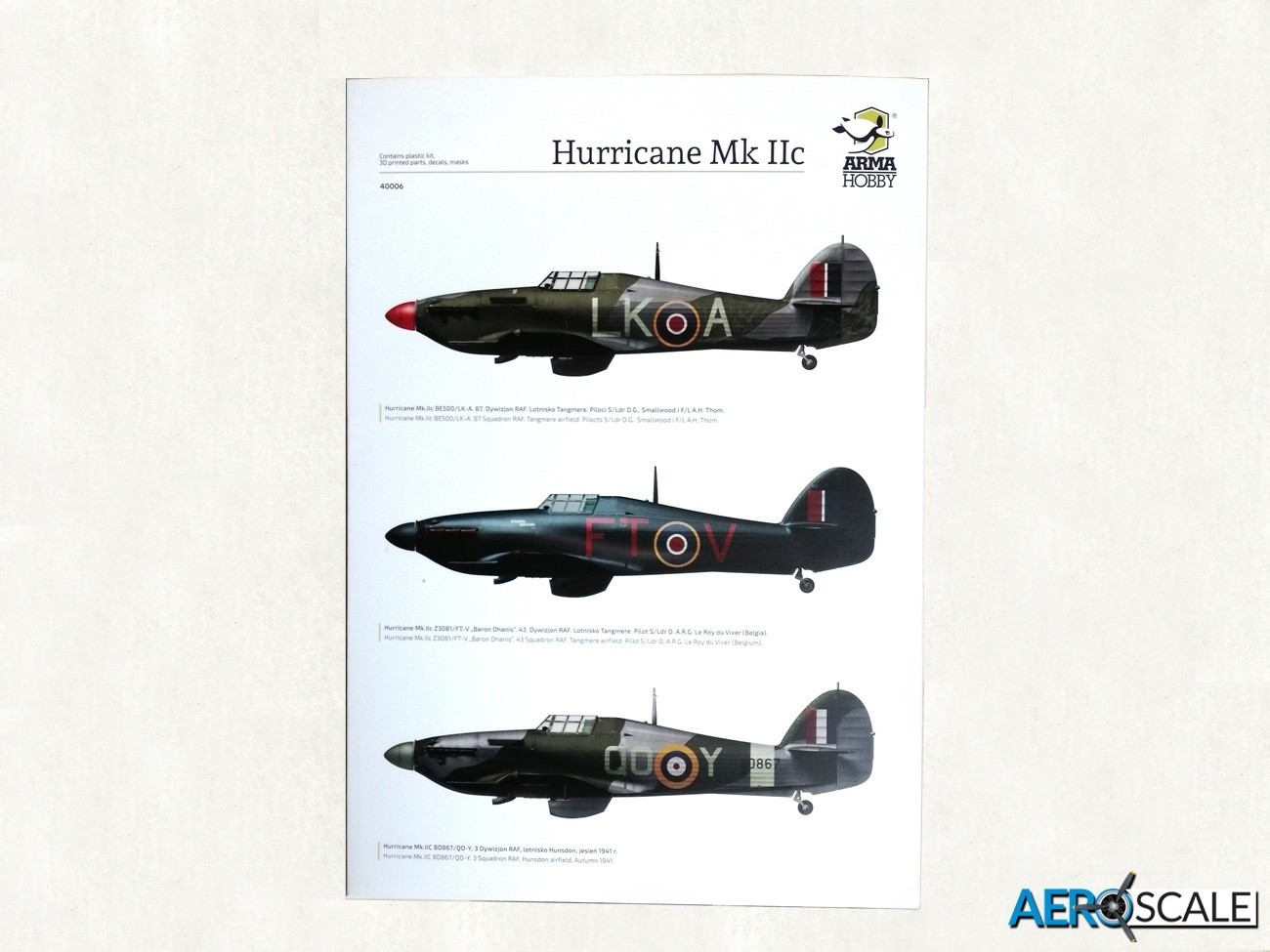

The Kit
This release marks Arma Hobby’s tenth year of producing kits. To celebrate this landmark Arma Hobby has chosen the new tool Hurricane Mk.IIc 1:48 scale kit with a sprinkling of3D printed parts. The airframe of the Hurricane has a mix of canvas and metal skinning, which is replicated beautifully on this release The recessed and raised detail is crisp, and has been used with stunning effect. The surface of the plastic has flush and raised rivets, as well as the fasteners for access panels, so the overall look is excellent. The rear of the fuselage, tail and control surfaces has a hint of the stretched fabric. Detail of various areas including the cockpit and undercarriage bay are well thought out. Arma Hobby has were possible created individual parts rather than rely on low relief detail, achieving a more realistic look. Although the box is side opening, there is a robust cardboard tray. This should stop any box collapse if there are additional kits stored on top.

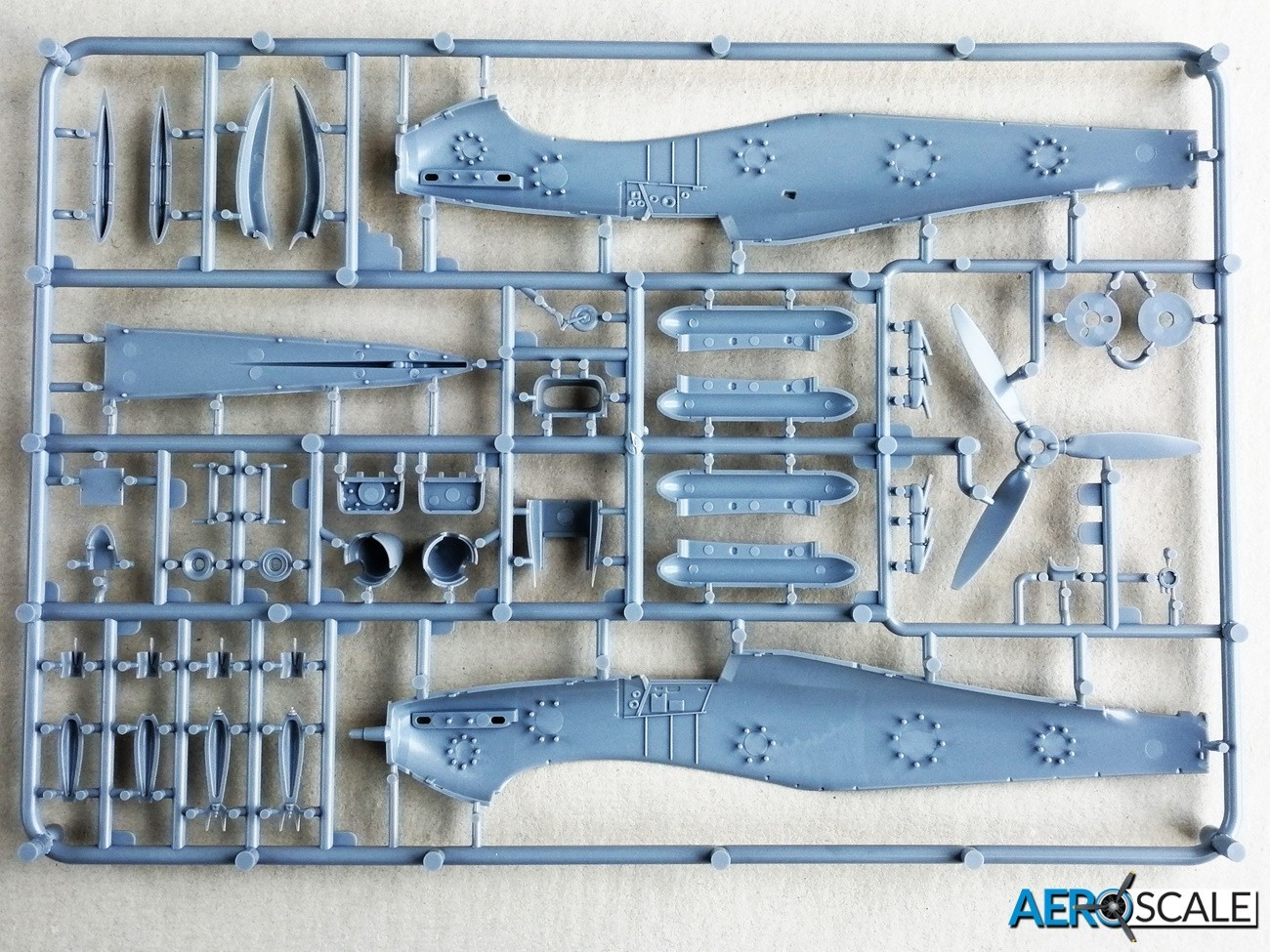

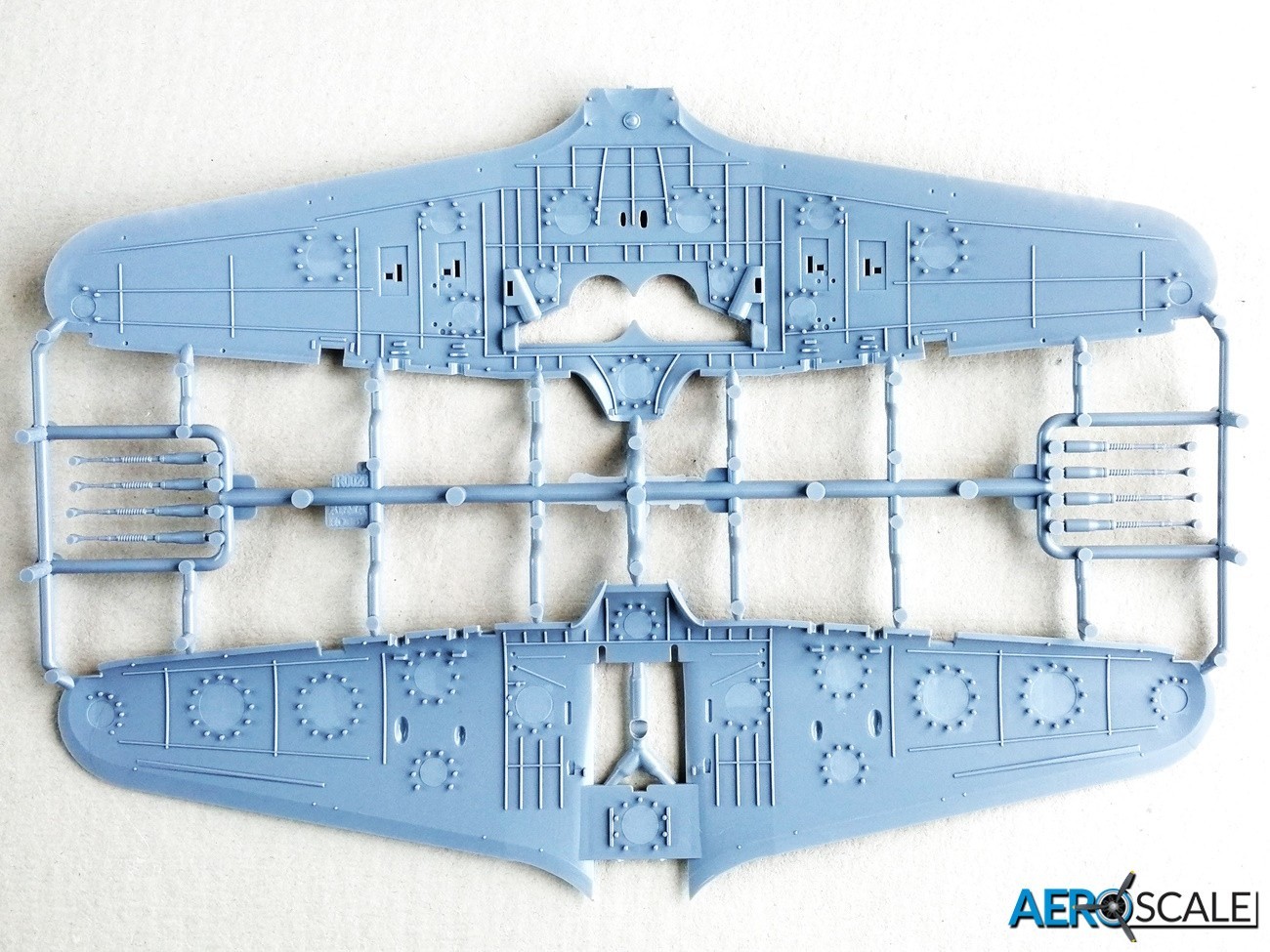
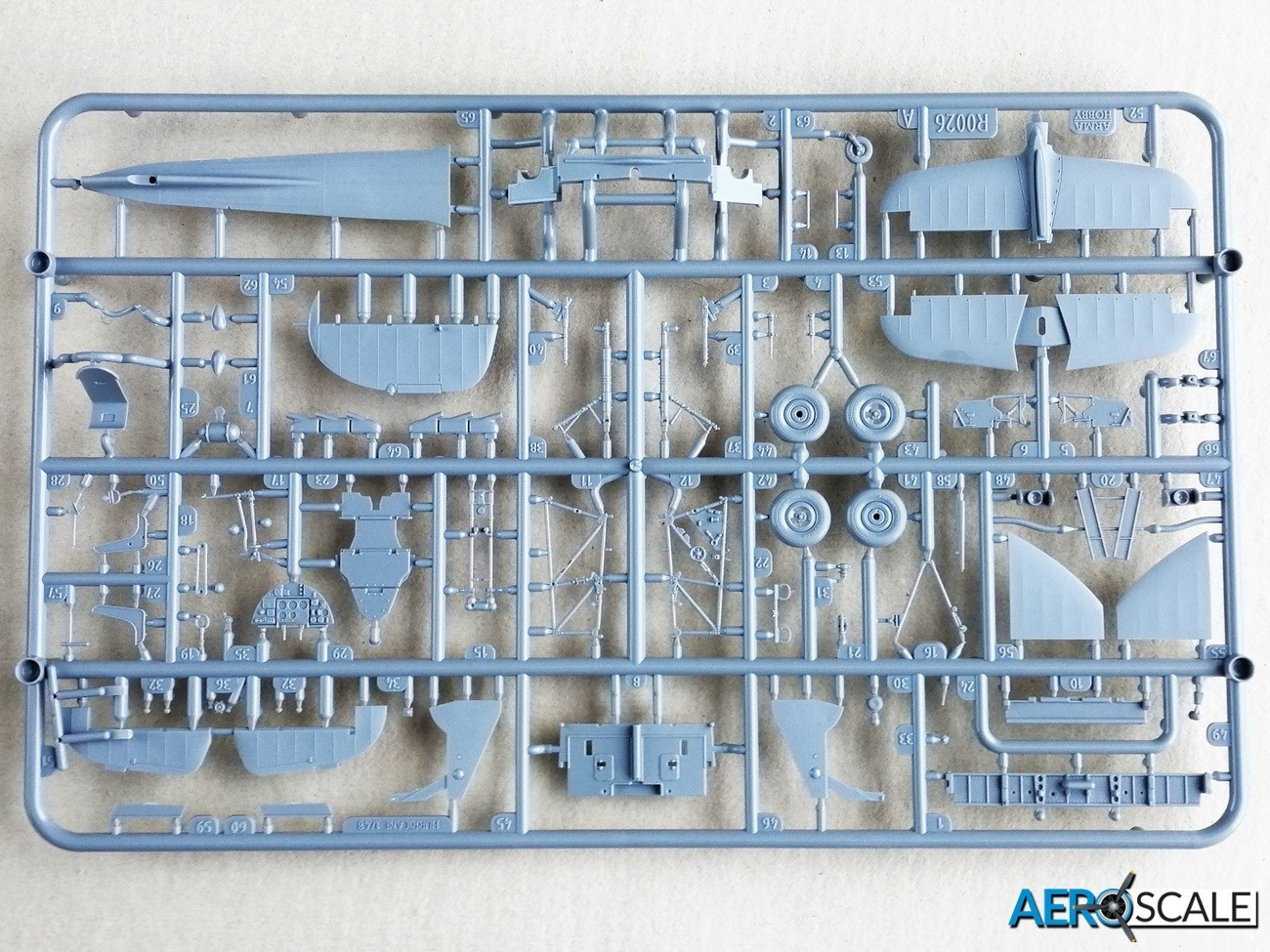
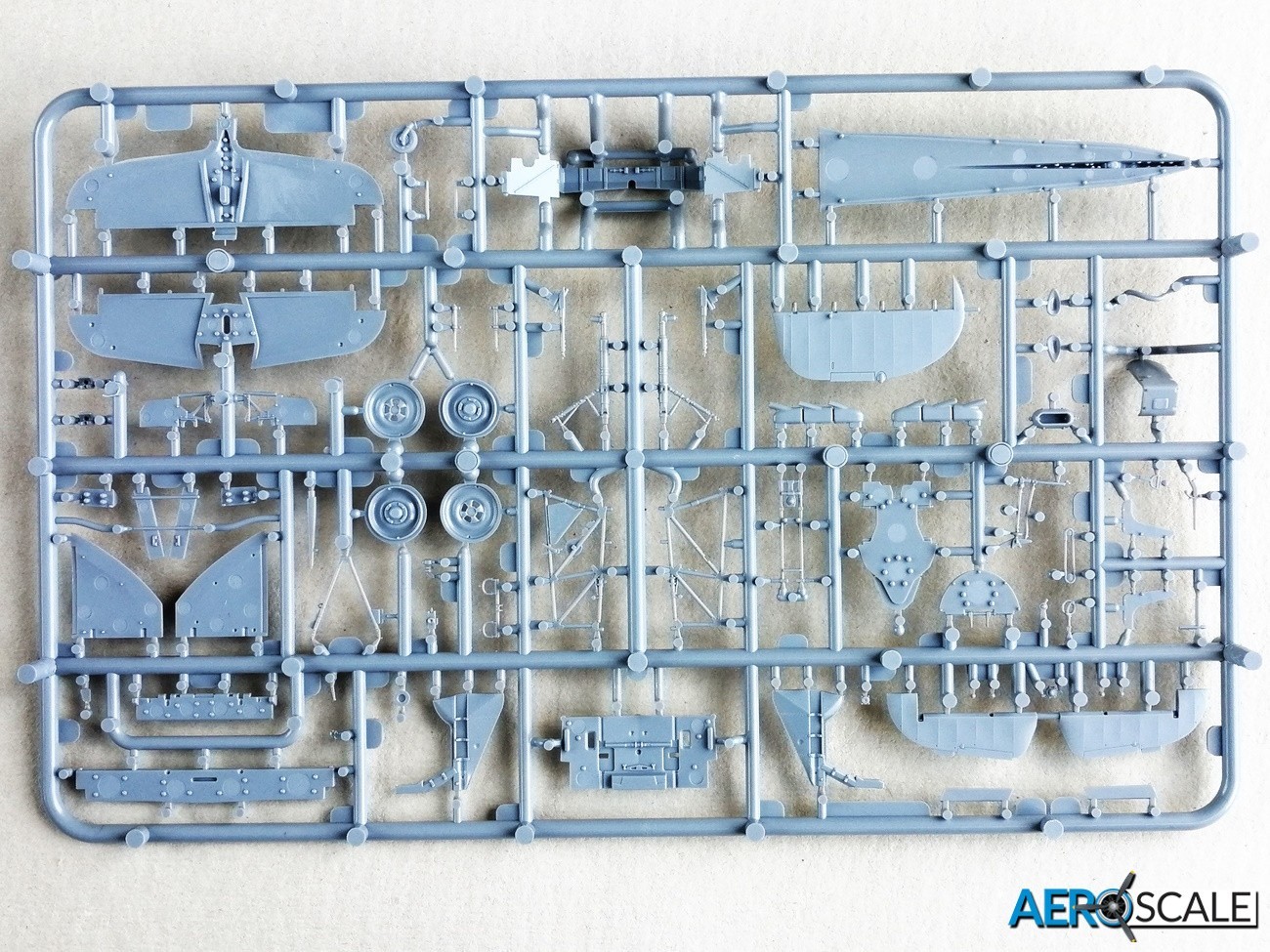
Contents of this 1:48 scale kit includes:
- 3 x grey plastic sprues
- 1 x clear plastic sprues
- 1 x sheet of paint masks
- 1 x sheet of decals
- Number of 3D printed parts
- 1 x A4 12-page instruction manual

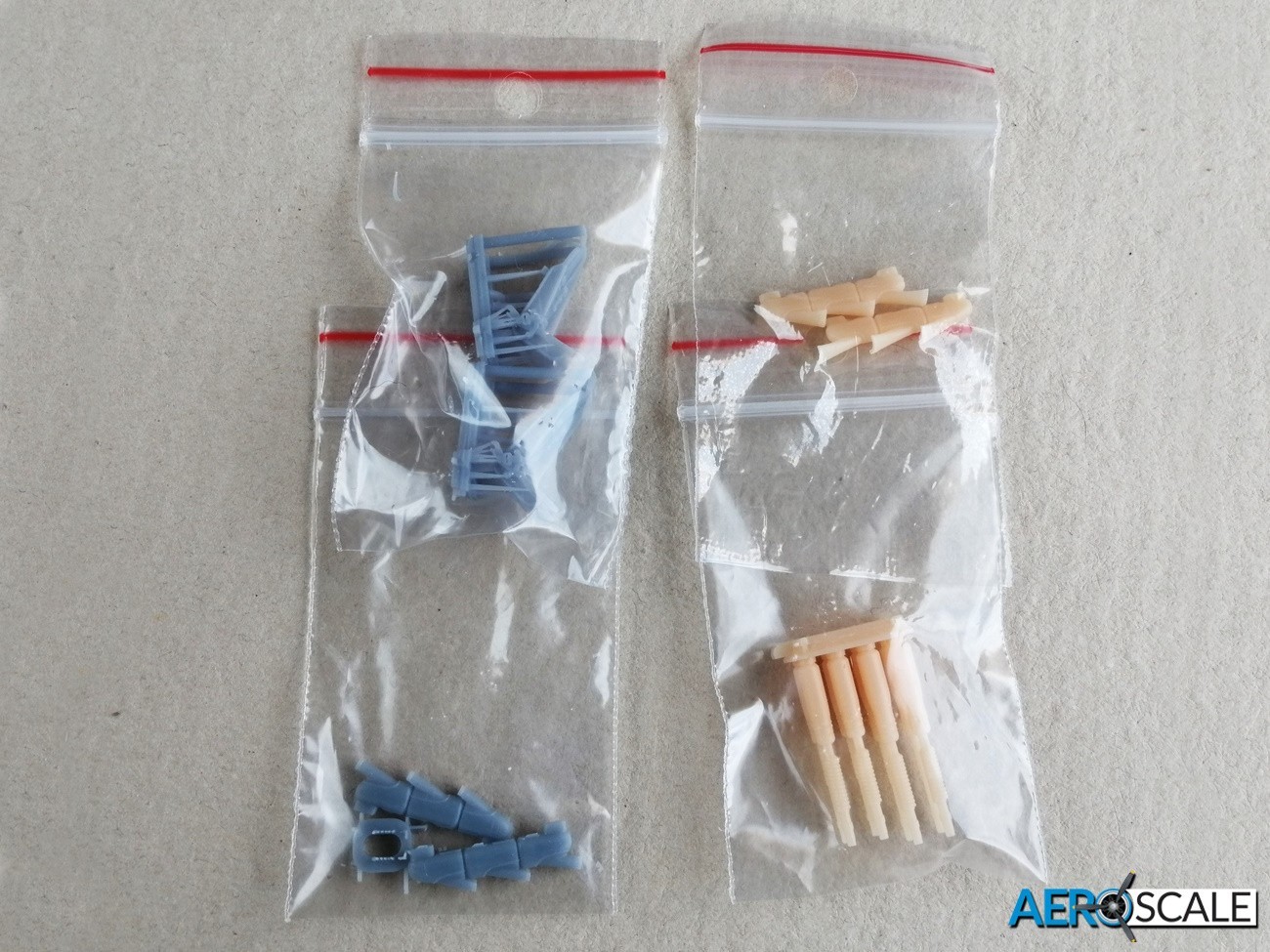
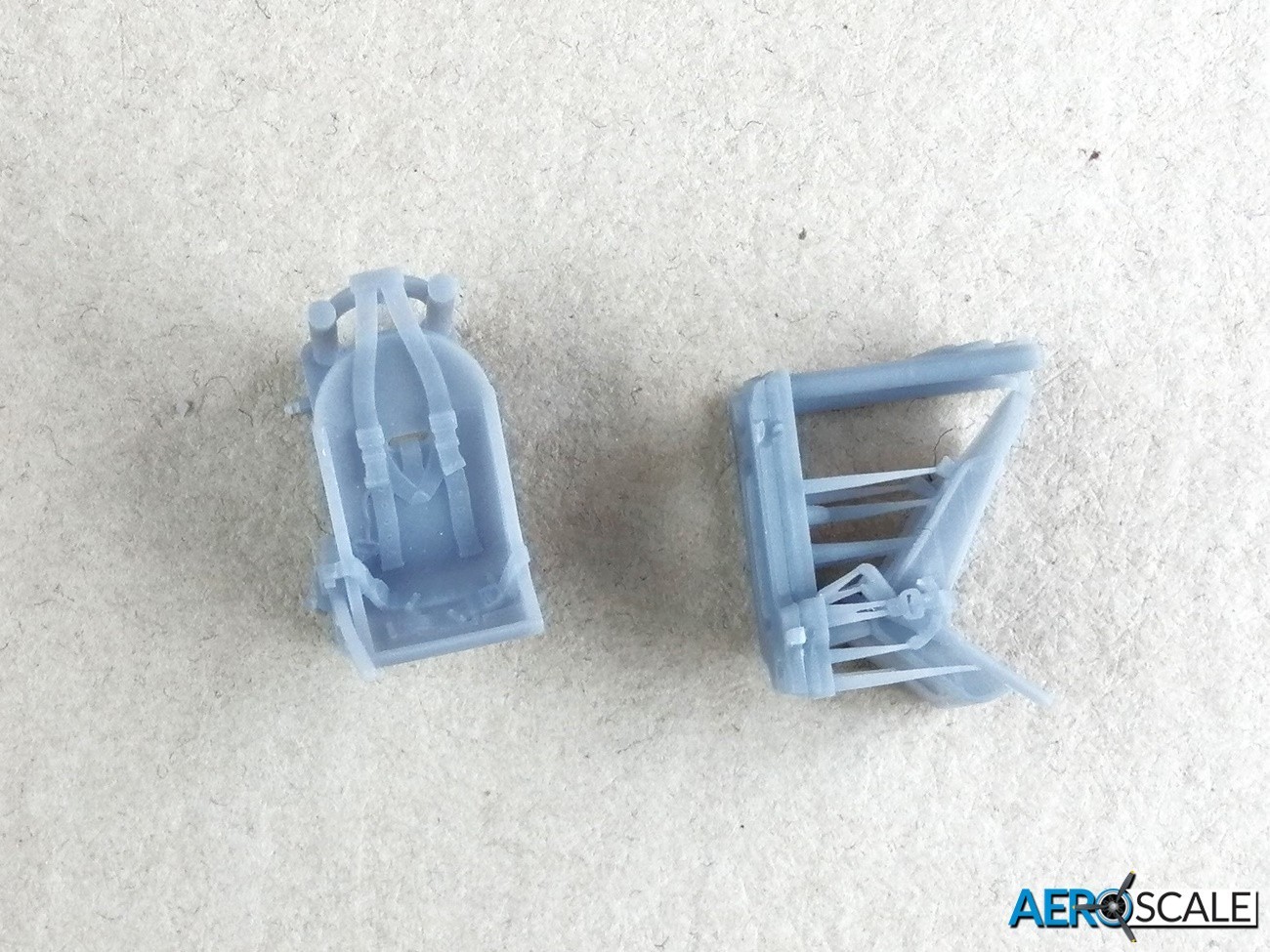
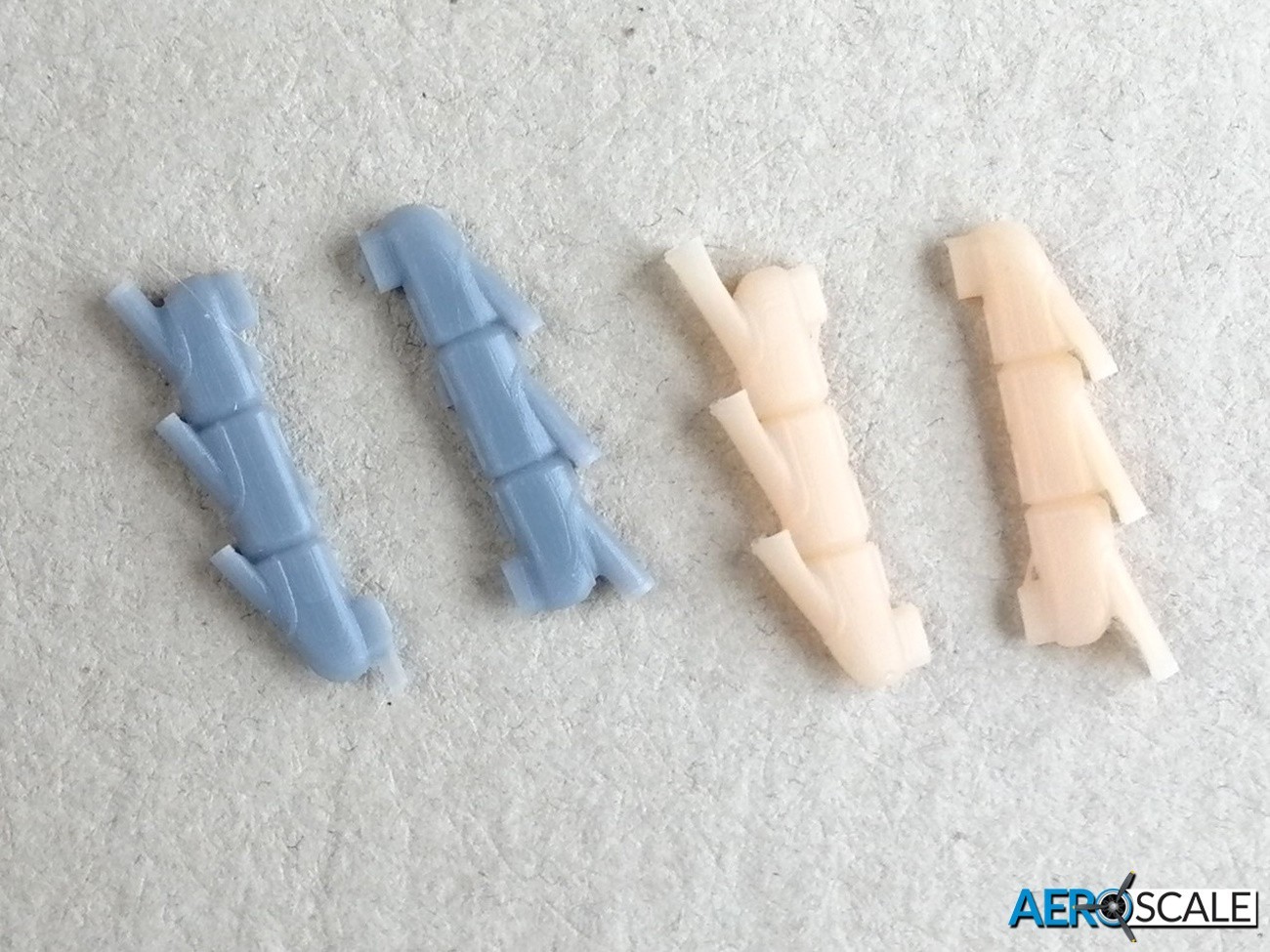

The cockpit is made up from twenty-nine plastic parts, so it’s going to be pretty detailed. The instrument panel has raised instruments with a decal to create the instrument faces and switches. There are also decals for some of the instruments on the sidewall. Most of the cockpit components are fitted on the bridge between the upper half of the wing. There is no floor as such, just a couple of runner boards for the pilot’s feet mounted on a tubular framework. The piping containing the control cables from the control stick and rudder pedals are also included. There are some raised detail on the inside walls of the fuselage. Tubular framework adds further to the detail as does the numerous small parts. The detail on all the components for the cockpit is superb. The four-part seat includes the seat height adjustment lever and decals represent the seat belts. One of the bonus 3D parts is not one but two pilot’s seats with seat belts moulded. It looks superior to the plastic and decal parts and its one piece. To finish off the cockpit there is a clear plastic gun sight to install.
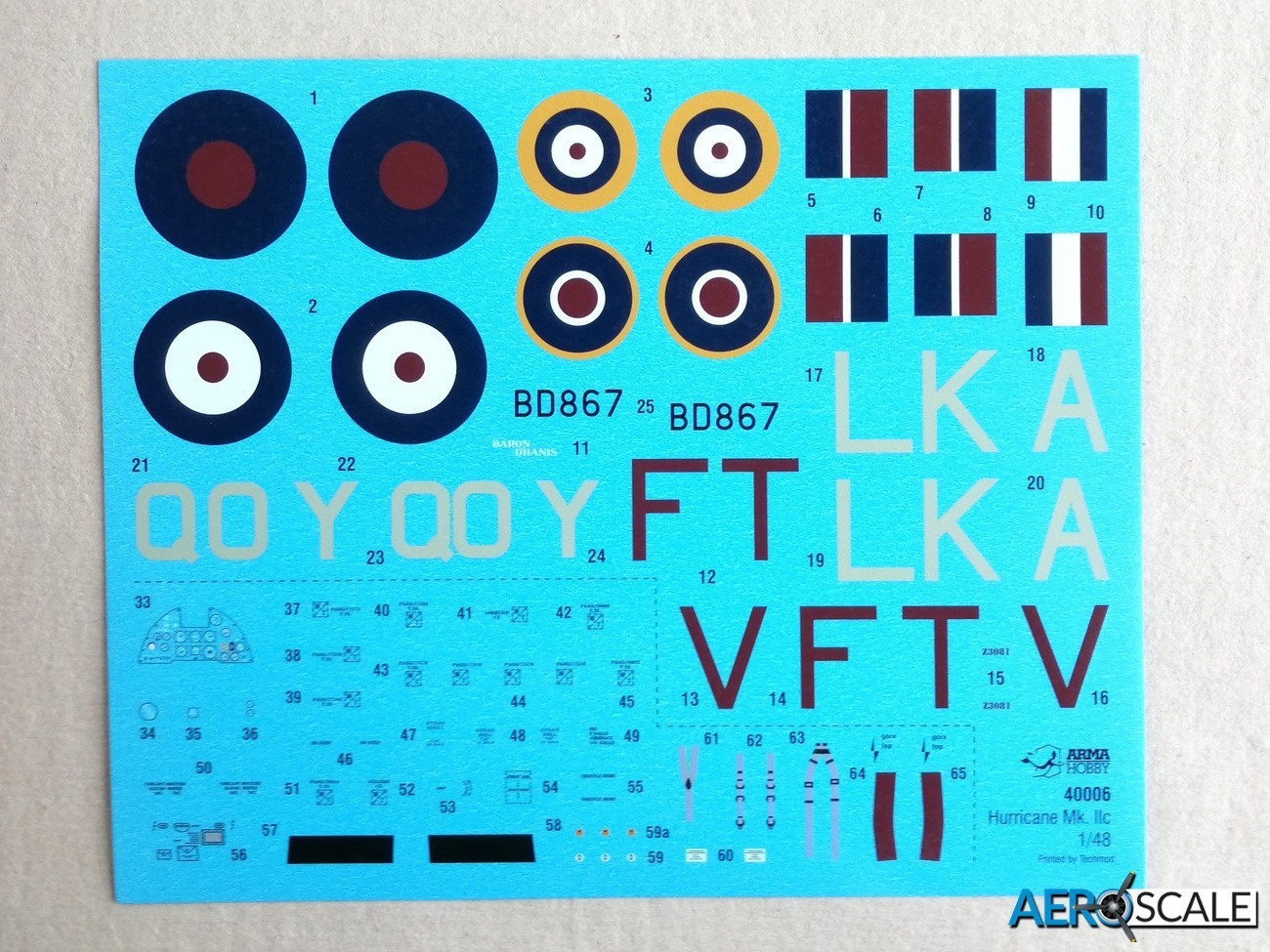
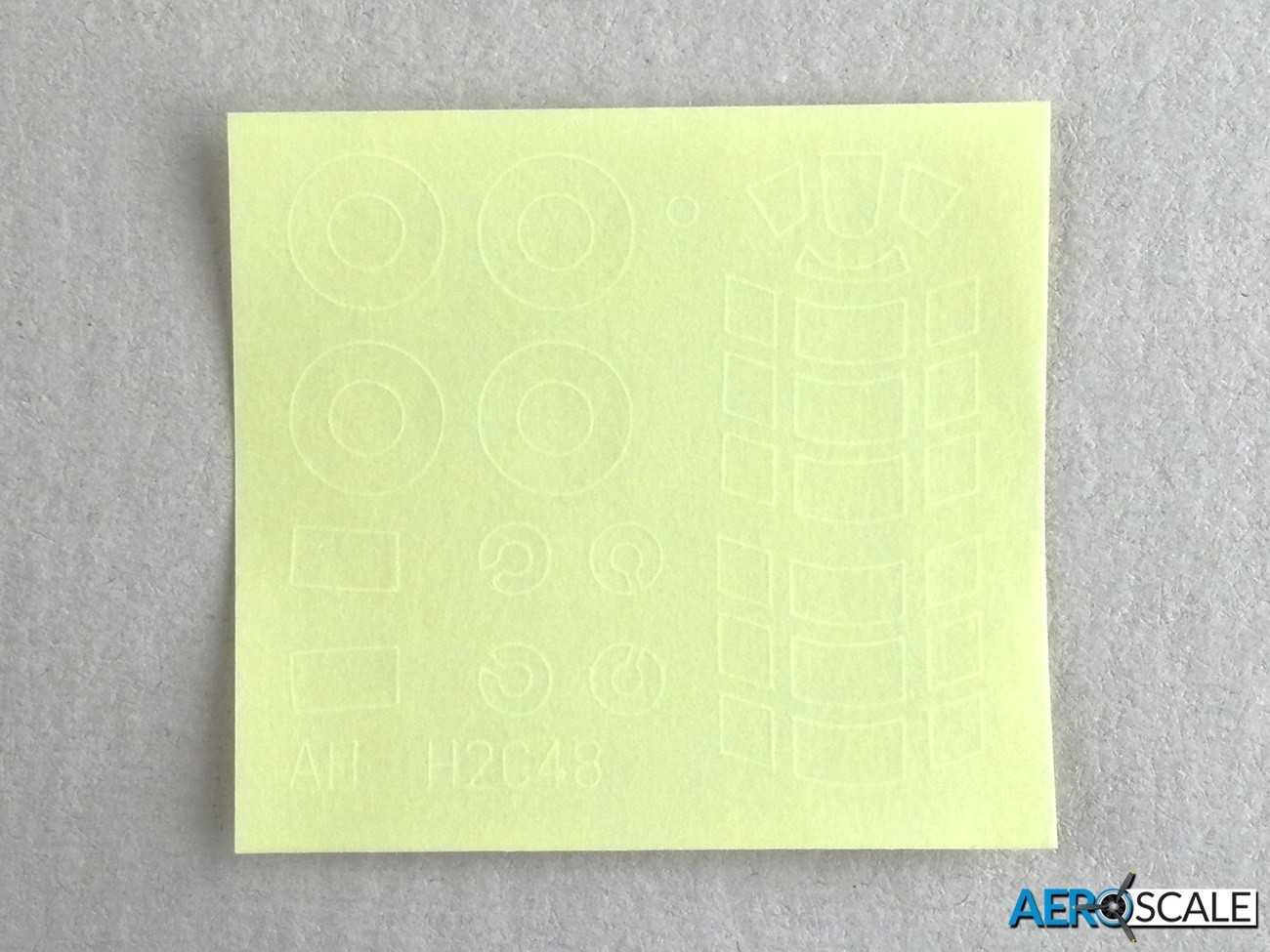
The clear parts are crystal clear and commendably thin. The canopy and windscreen are separate. There are two canopies: one for the open position and the other for closed. If you are going for the closed canopy then some plastic on the cockpit sill needs to be removed. There are paint masks for these clear parts. There is a clear plastic part representing the windscreen mounted rear looking mirror.
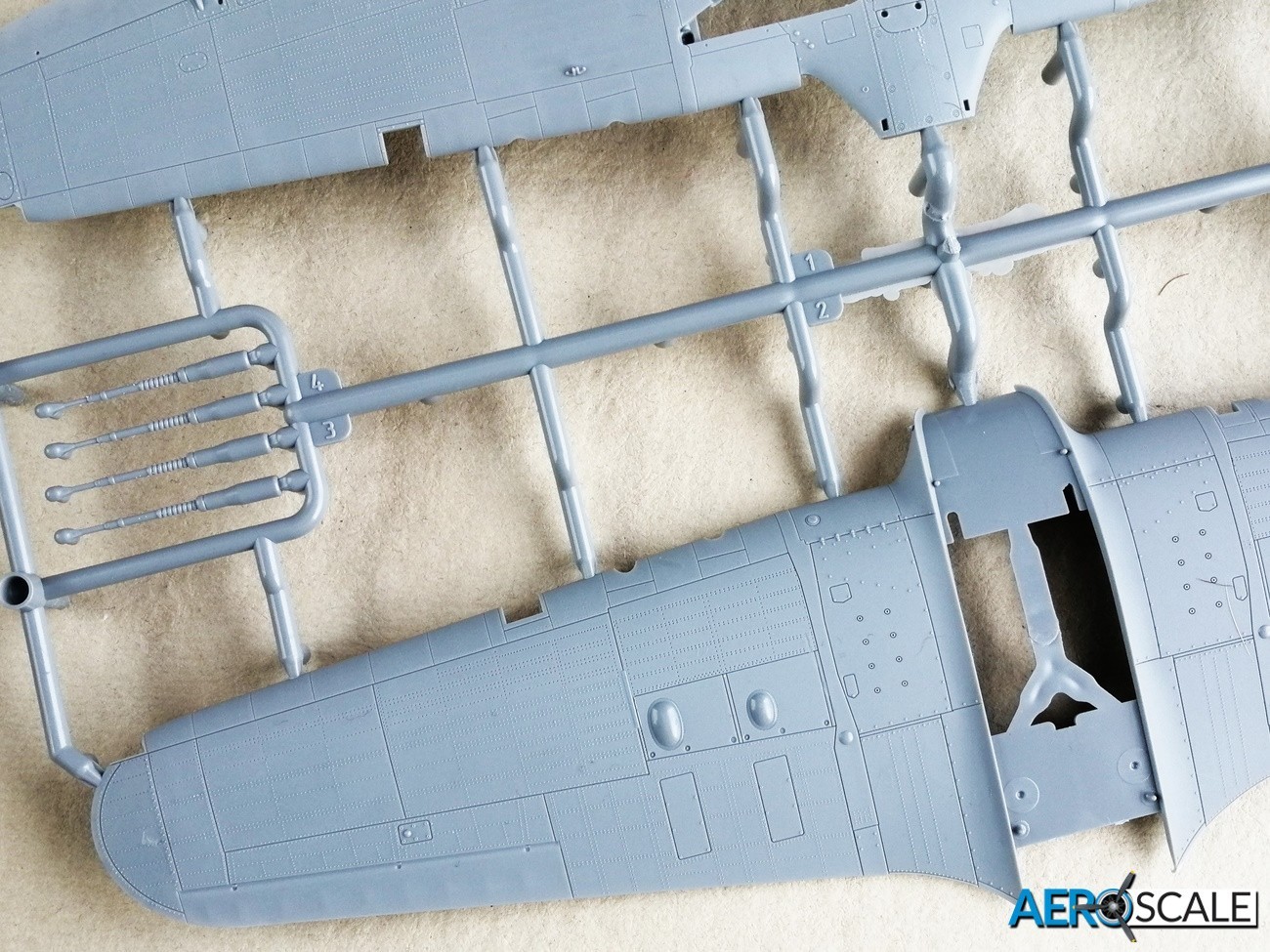
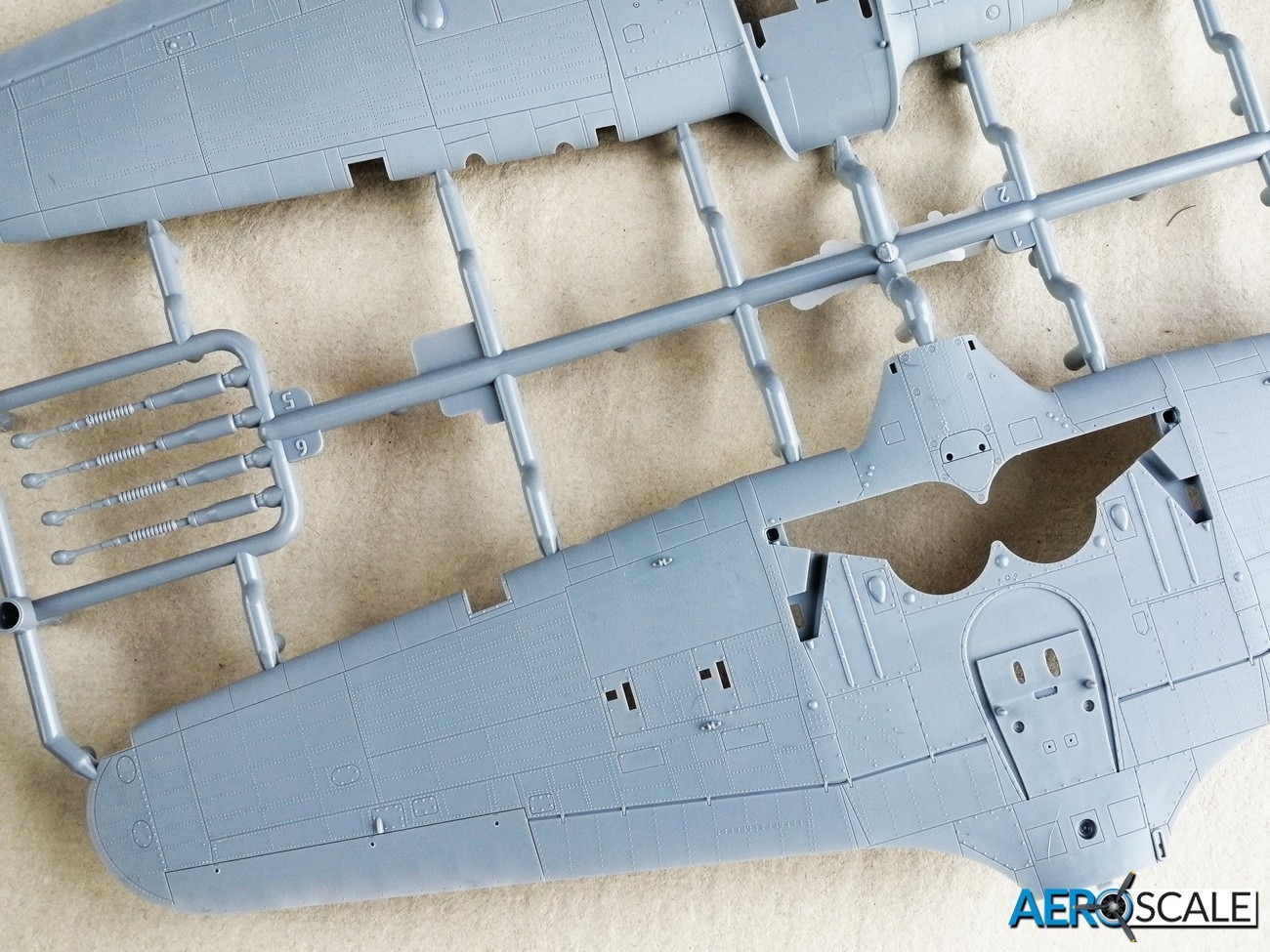
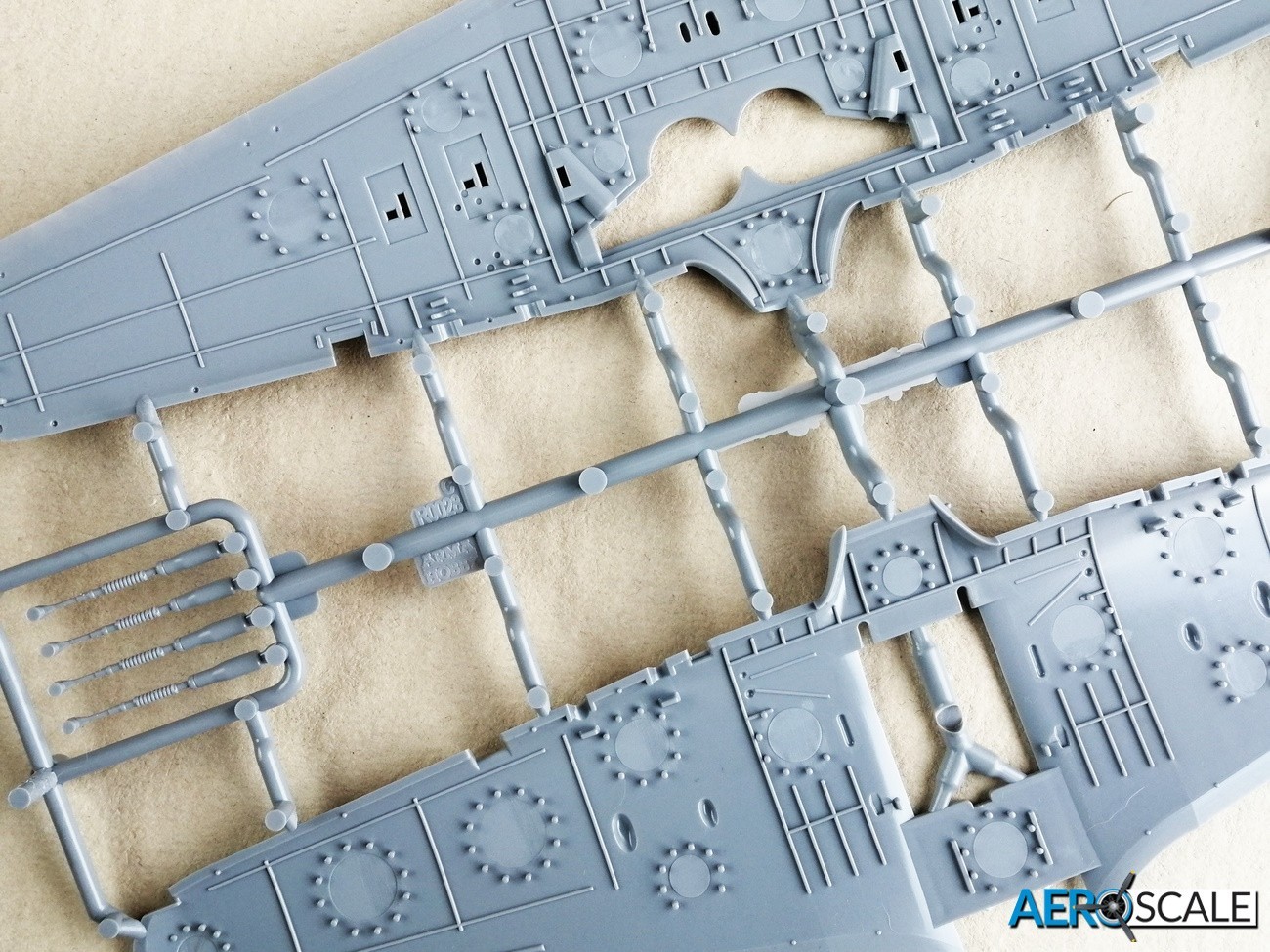

The fuselage is split traditionally into left and right halves. The rear lower ventral area is separate obviously to accommodate different marks or carrier based versions of the Hurricane Mk.II. The belly radiator fairing is separate and made up from four parts. The flap to the rear is separate and positionable. The radiator faces are made up from three parts. The moulded detail on the radiator faces is superb. Once completed its fitted to the recessed area in the belly. The carburetor intake fairing just in front of the undercarriage bay is made up from two parts. The prop is made up from four parts, with two alternate spinners. The oil collector ring behind the spinner is moulded onto the nose. The nose blisters are separate and there are exhaust flame guards to fit for the intruder/night fighter option [2]. There are two styles of exhaust pipes included and you have the choice of plastic or 3D printed. The 3D parts look superior as they have a recess at the end of the pipes.
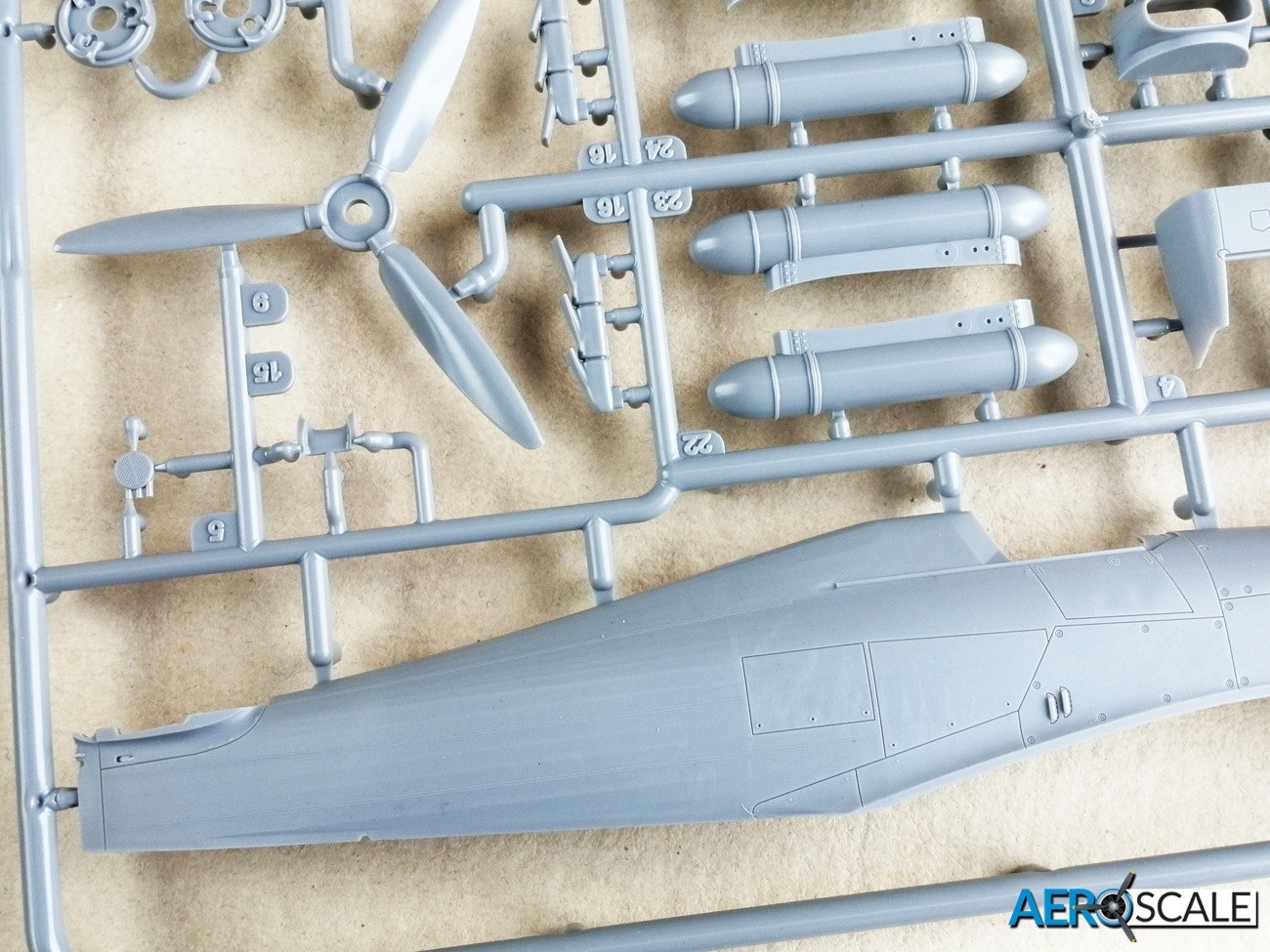
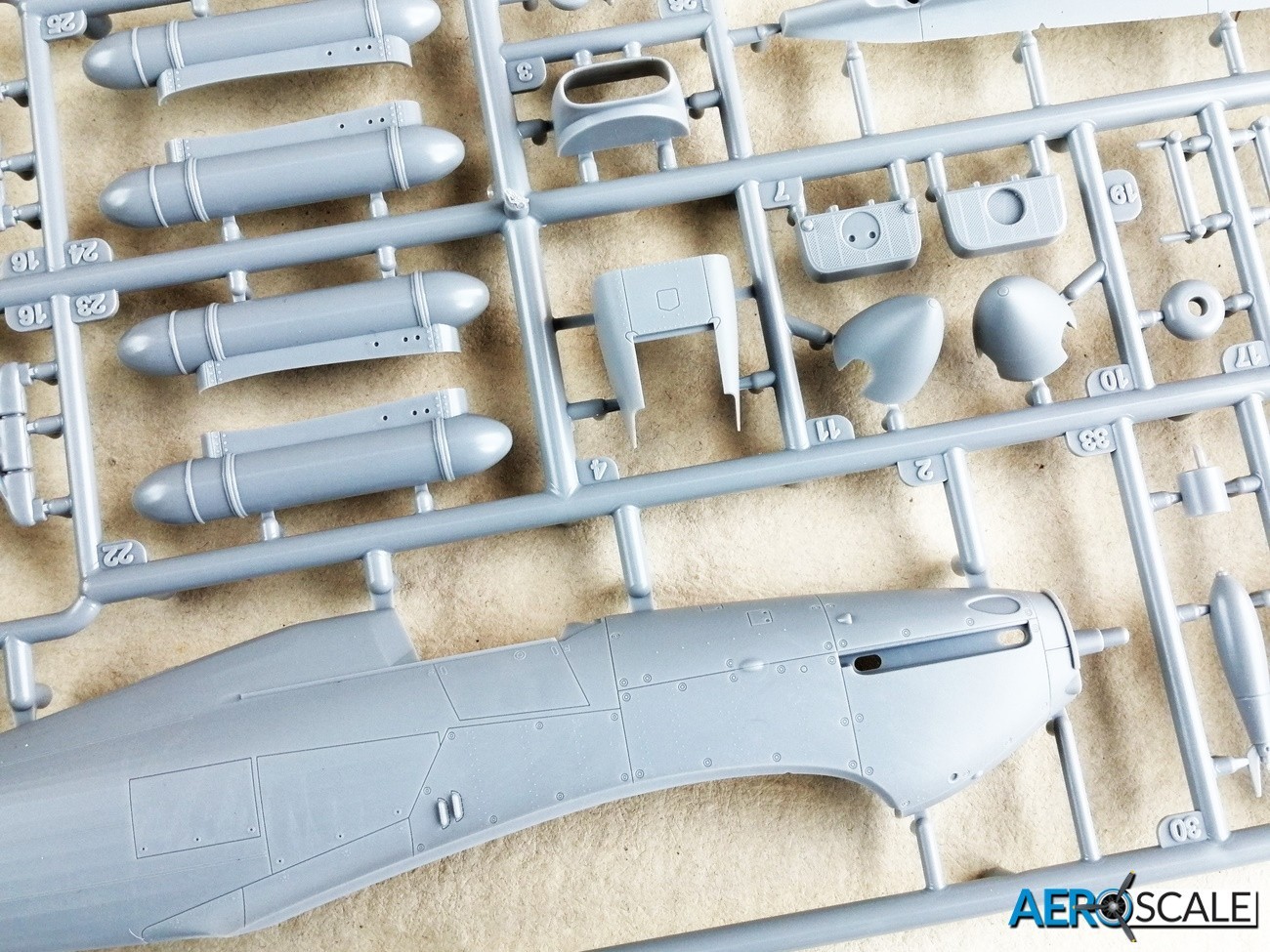

Both upper and lower wing parts are full span, with the upper wing bridged by base for the cockpit. The ailerons and flaps are moulded with the wings. Holes need to be drilled to fit the fuel tanks. Bombs are supplied, but not used with any of the marking options. Some detail needs to be removed from the wing to depict accurately the Mark IIc, the instructions provide full details. A nice touch is the separate landing light parts. Not just the clear parts, but the reflector is reproduced. A small strip of plastic on the inside of the wing needs to be trimmed to fit the reflector of the light. There are two versions of the canon barrels fitted to the wing leading edge. There is 3D printed alternatives included and like the seat and exhausts do look superior to the plastic parts. The recess at the end of the barrels really creates a more realistic look. The horizontal stabilisers are two full span parts with separate one-piece elevators.
The undercarriage bay is made up from eleven detailed parts and that does not include the undercarriage gear itself. The main undercarriage oleo has separate retracting jacks. The detail on the inside of the main undercarriage door is very good. The weighted main wheels are split in half and masks are included. The manufactures name is a raised detail on the walls of the tyres. There are two choices of tail wheel, and these have paint masks too.
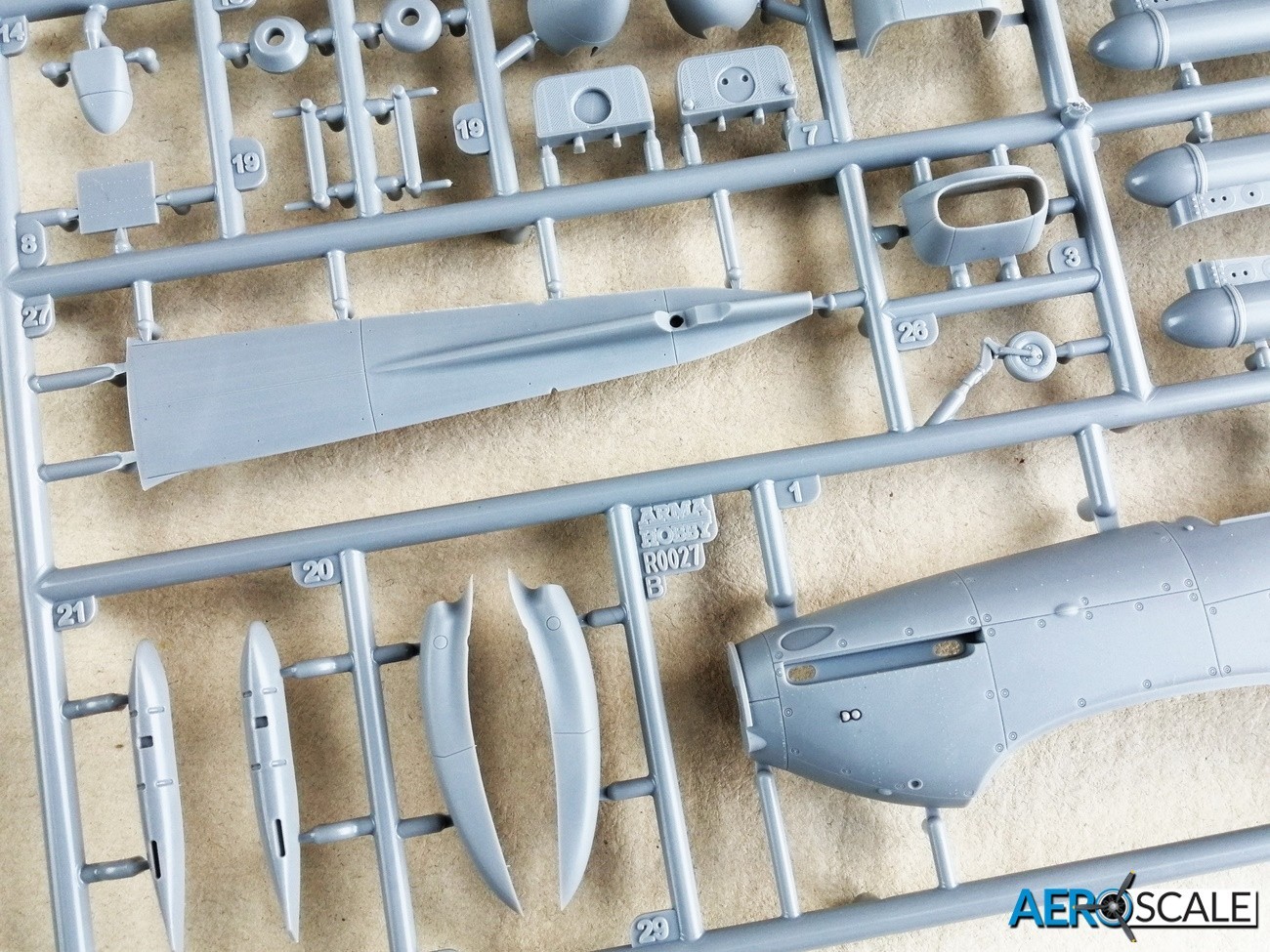
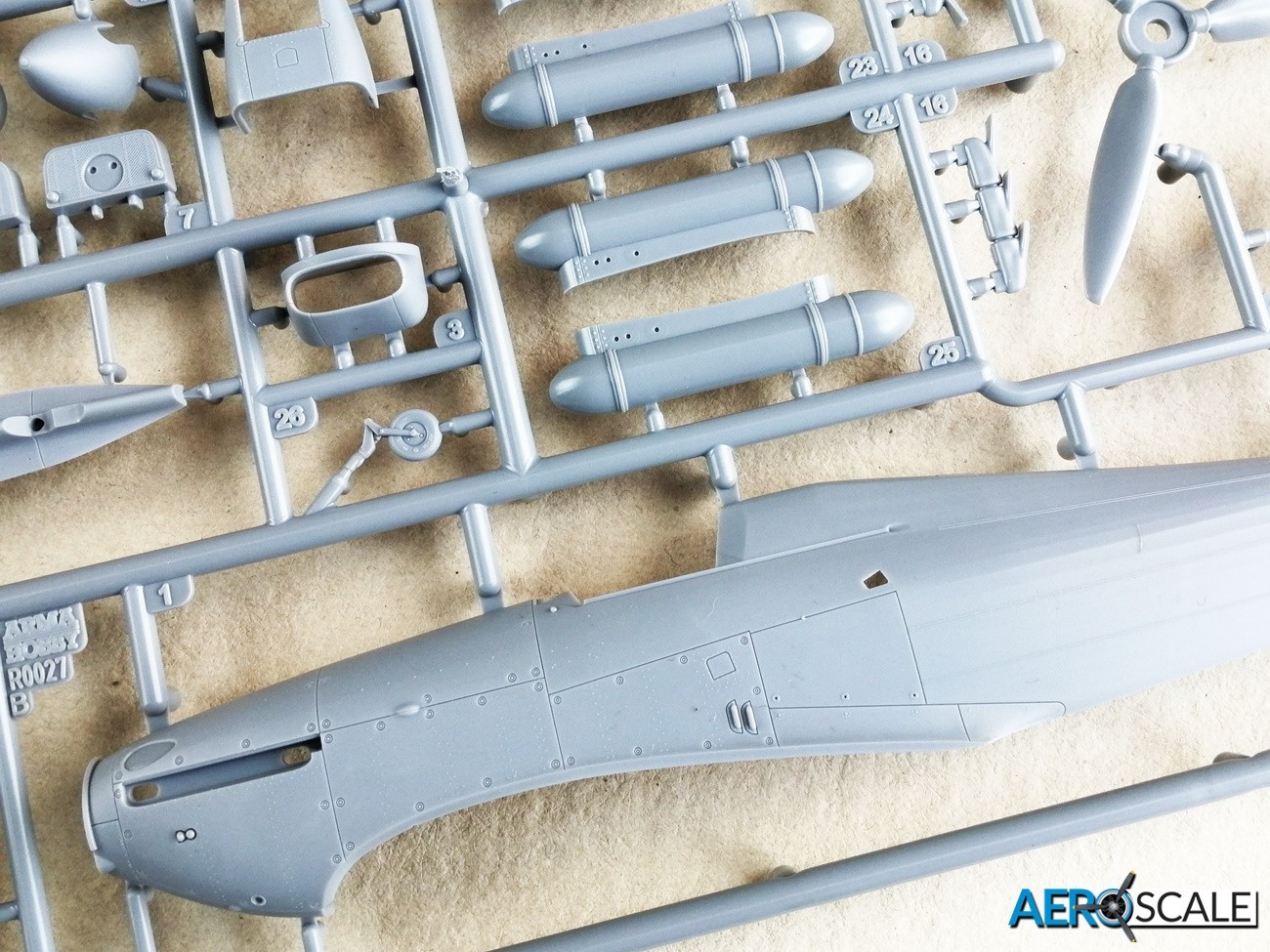

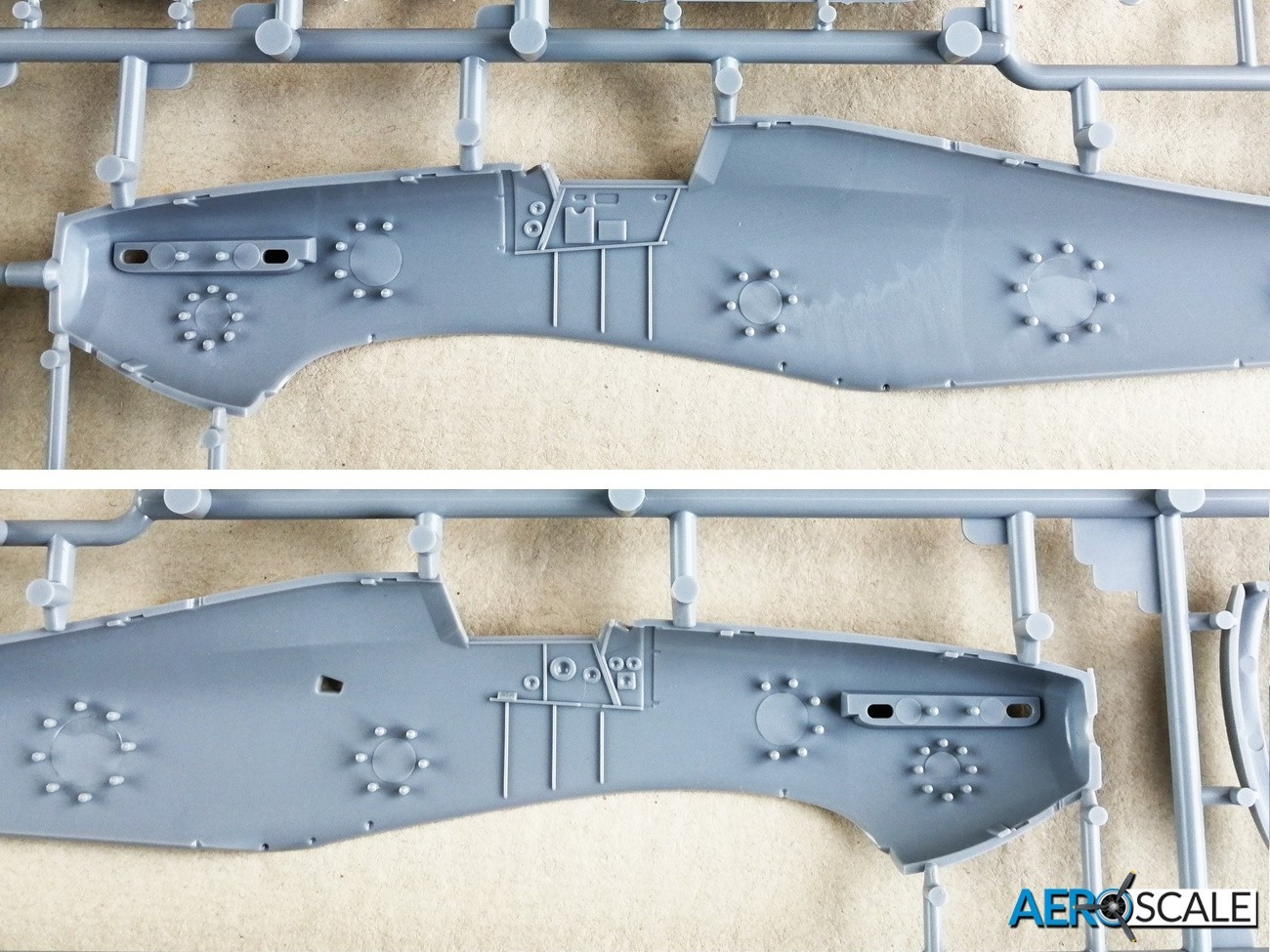
The fuel tanks are two-part with separate wing attachment pins. The bombs are four-part with commendably thin annular stabilisers, though these are not fitted on any of the marking options.
The 3D printed resin parts as mentioned includes:
- 2 x pilot seats [including seat belts]
- 2 x sets of four canon barrels
- 2 x sets of two exhaust pipes
The 3D printed parts replace the plastic items in the kit. The beauty of 3D parts is the lack of pin holing that was sometimes seen on cast resin items. The seats, canons and exhausts are separately packaged.

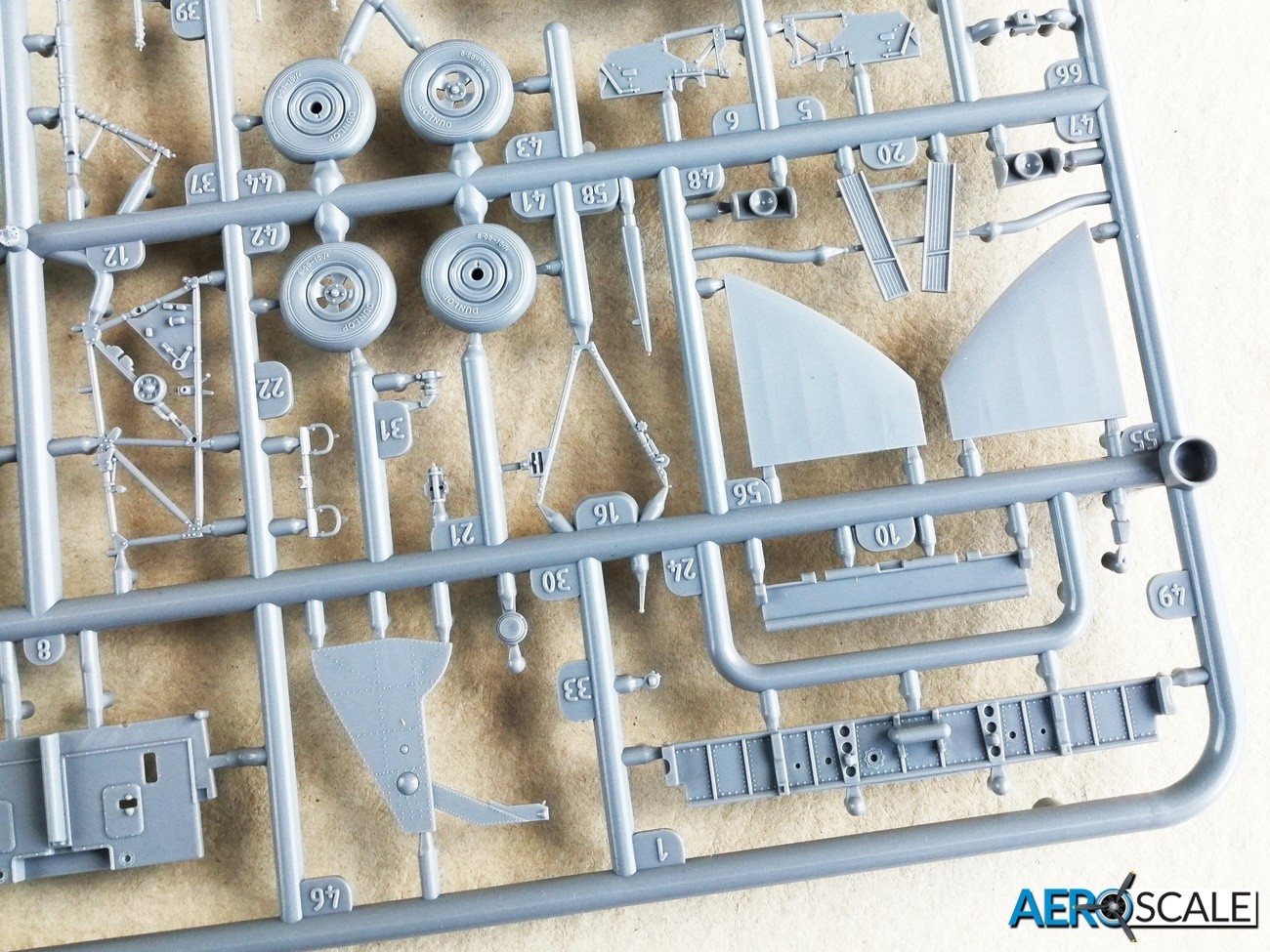
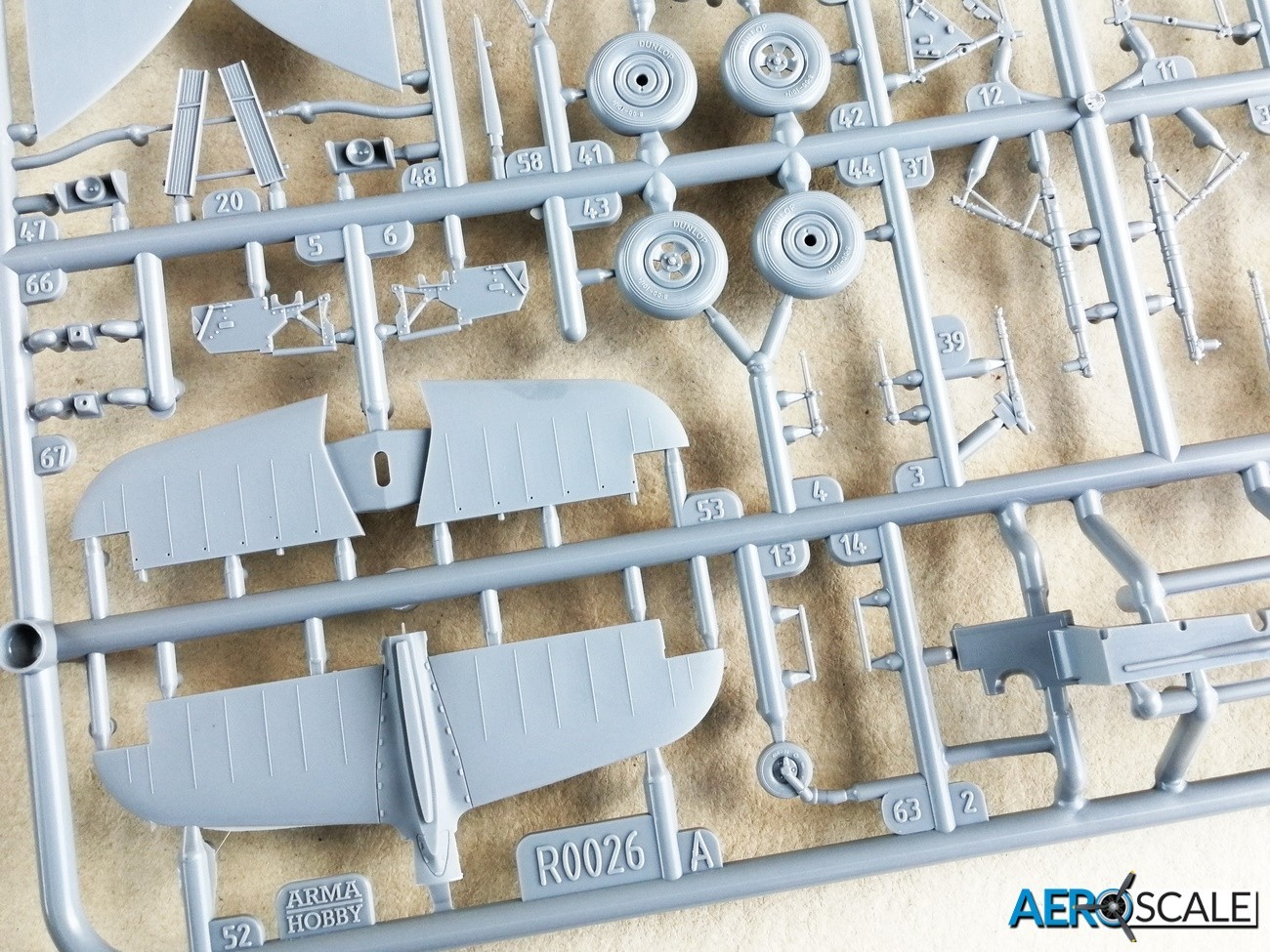
Decals are printed by Techmod. They look excellent with good colour density and the registration is excellent. The definition is very good particularly on the stencils and instruments.
There are Kabuki style paint masks for the windscreen, canopies, landing lights and main wheels as well as the tail wheels.



There are variations with the marking options so its important to study the instructions before commencing the build. The black line drawings with written instructions in English and Polish are explicit, and there does not seem to be anything left vague. The four view full colour illustrations are always welcome inclusion on any paint guide. There are several paint manufactures referenced in the instructions including: Hataka, AK RC, Lifecolor, Ammo, Humbrol, Vallejo and Tamiya. FS numbers are provided for all the colours except sky blue.

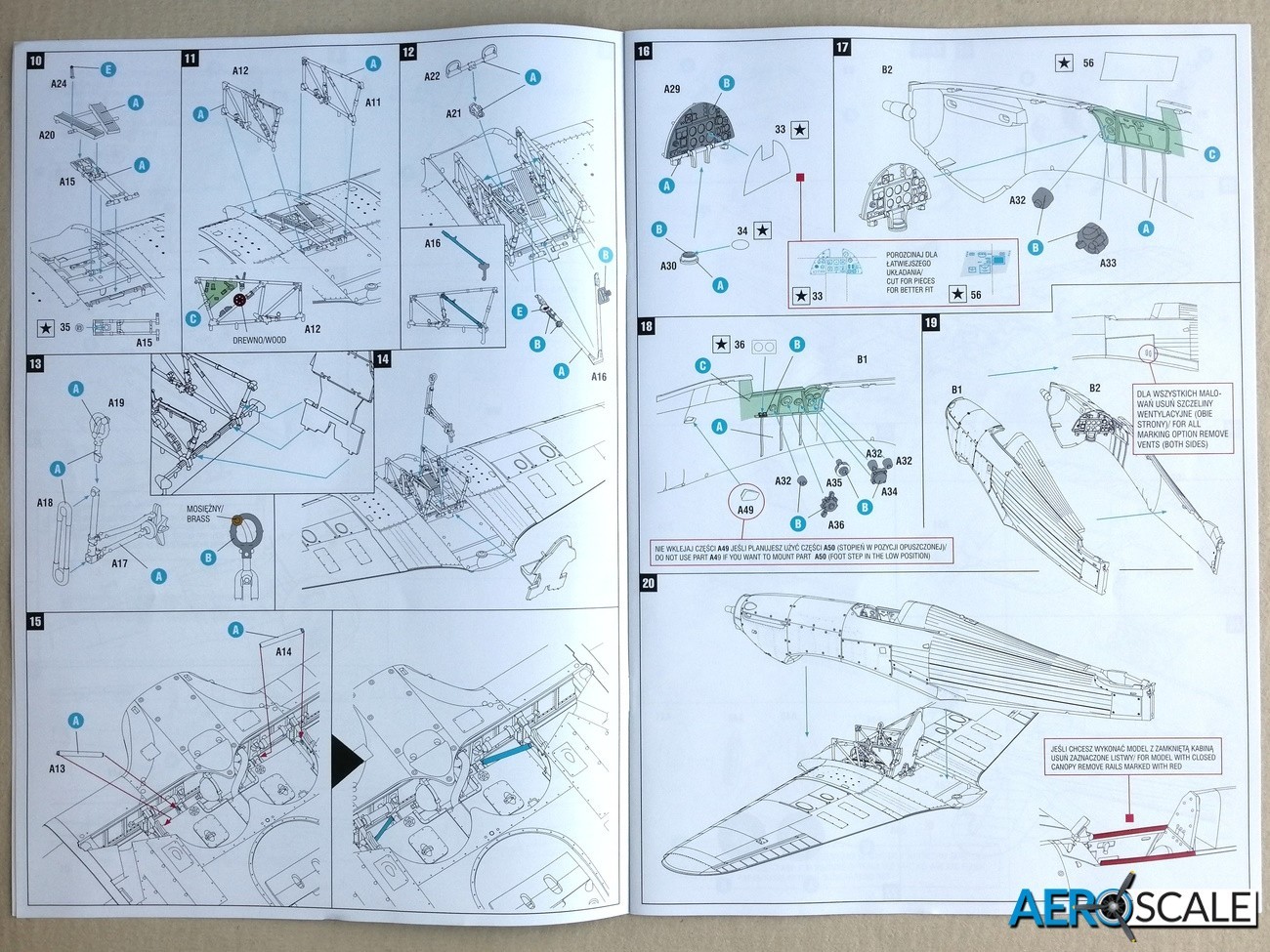
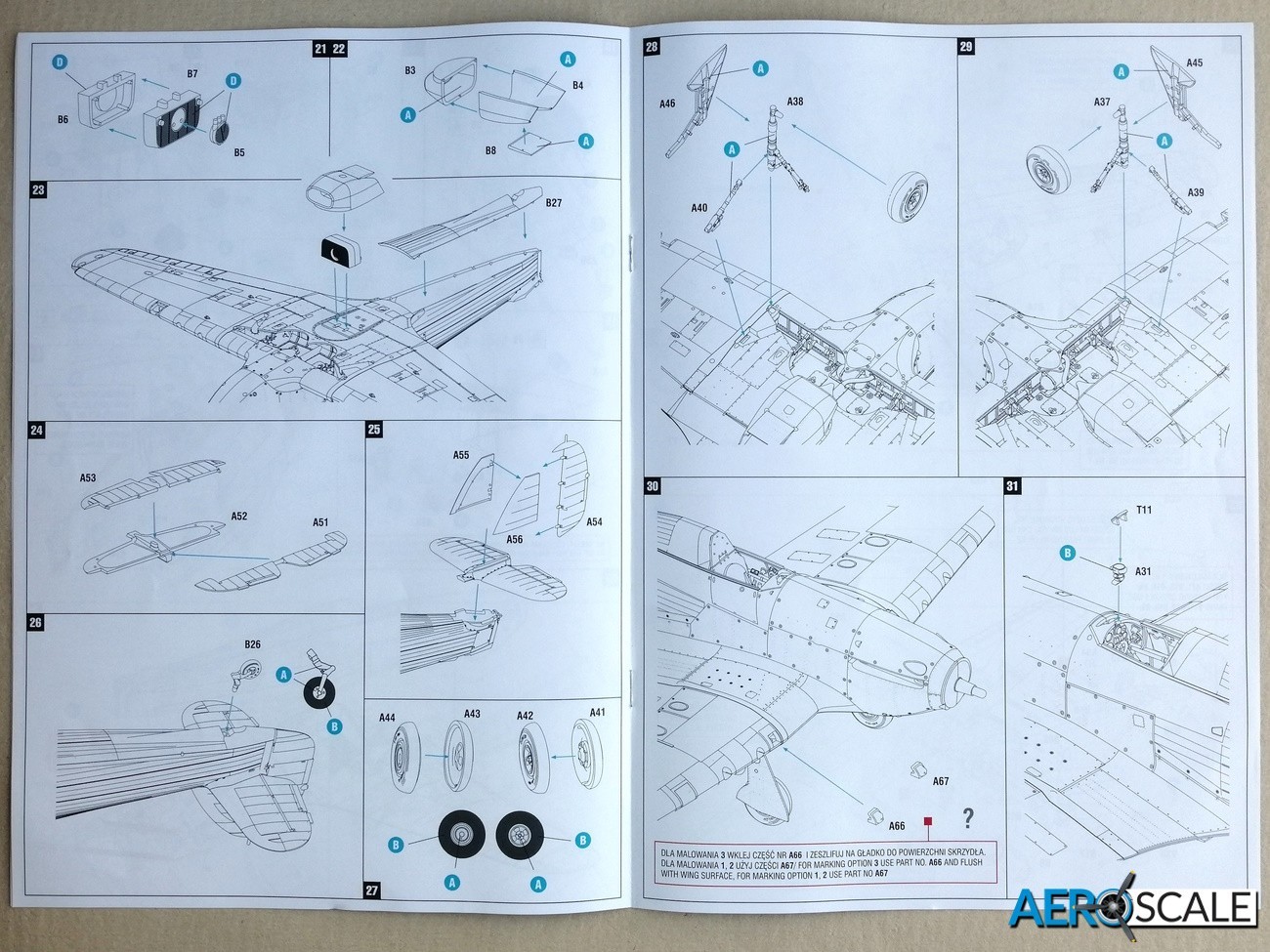
Marking options.
Arma Hobby seems to have taken great care researching each of the three marking options. As you would expect from the box title all three marking options took part in ‘Operation Jubillee they include:
- Hurricane Mk.IIc BE500/LK-A. No. 87 Squadron RAF. Tangmere airfield. Three missions in operation “Jubilee”. Pilots: S/Ldr D.G. Smallwood i F/L A.H. Thom.
- Hurricane Mk.IIc Z3081/FT-V “Baron Dhanis”. No. 43 Squadron RAF. Tangmere airfield. Three missions in operation “Jubilee”. Pilot S/Ldr D.A.R.G. Le Roy du Vivier (Belgium).
- Hurricane Mk.IIC BD867/QO-Y, No. 3 Squadron RAF, Hunsdon airfield, Autumn 1941. This aeroplane was shot down during the “Jubilee” operation, pilot Sgt. Stirling David Banks (RCAF) died. The appearance and marking of this plane on 19th August 1942 is unknown.
Option 1 and 3 has ocean grey and dark green upper disruptive pattern. Option 1 has black under surfaces and red propeller spinner, while option 3 has medium sea grey under surfaces. Option 2 the night fighter/intruder is black or night overall


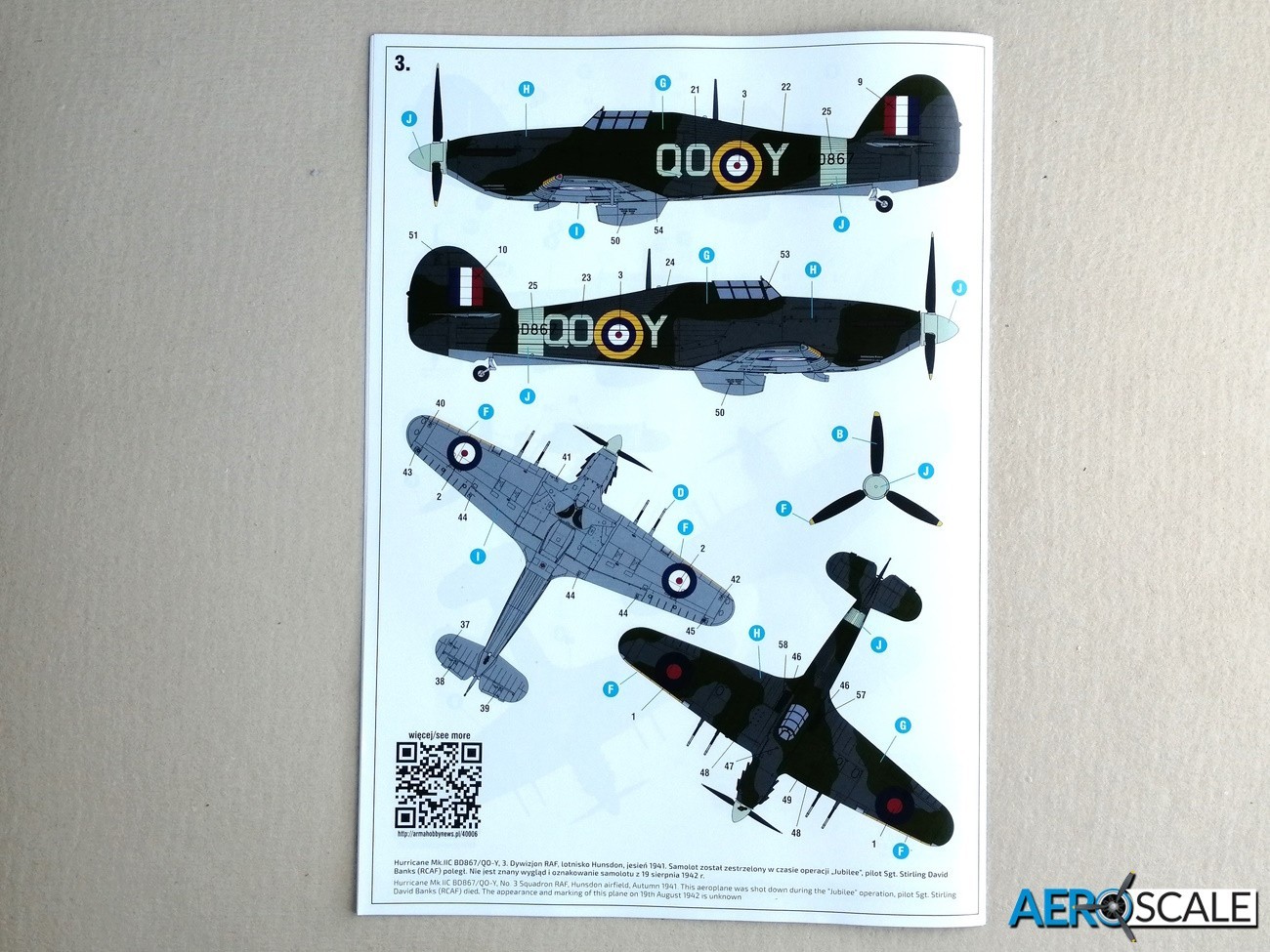
Conclusion
First, congratulations to Arma Hobby for producing quality kits for a decade. They have quite rightly chosen their current new tool model to celebrate the 10th anniversary. This is a superb release from Arma Hobby. The attention to detail as well as the execution of the detail is quite superb. The excellent fitting parts will make the building process all that more pleasurable. The marking options are well chosen, particularly option 1 with the black under surface and red spinner. Very highly recommended
Check out Arma Hobby’s test build of the first release of the 1:48 scale Hurricane Mk.IIc [4004]. The Hawker Hurricane Mk.IIc 'Jubilee' edition is available from Arma Hobby's online shop
Our thanks to Arma Hobby for this review sample.
4006 - Hawker Hurricane Mk IIc ‘Jubilee’– 1:48
Please remember, when contacting retailers or manufacturers, to mention that you saw their products highlighted here – on Aeroscale.










